What the Internet Was Like in 2008
The launch of app stores by Apple and Google shook up the web ecosystem in 2008. Now there were potential gatekeepers. Although Google also launched its Chrome browser, so it covered all bases.

The internet in 2008 was defined by the emergence of smartphone apps, with the Apple App Store launched in July (along with a second-generation iPhone) and the Android Market following in September. But equally, there was a lot of innovation in web browsers too. Mozilla released Firefox 3 in June, while Google launched its new browser Chrome in September.
The web was still mostly a PC world over 2008, but it was fast going mobile.
Apps Arrive
On July 10, 2008, the Apple App Store launched. Also on that day, Apple released the second-generation iPhone 3G. There were 552 apps in the store at launch, of which about a quarter were free.
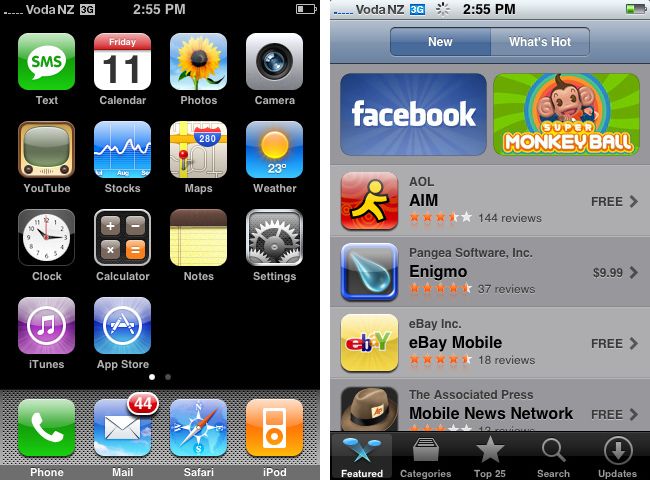
By the end of 2008, I noted in a roundup post on ReadWriteWeb that the number of apps in the App Store had risen to over 10,000. So in less than 6 months, the number and variety of iPhone apps had expanded greatly. As I wrote at the time, "any startup worth its salt has an iPhone version of its web app."
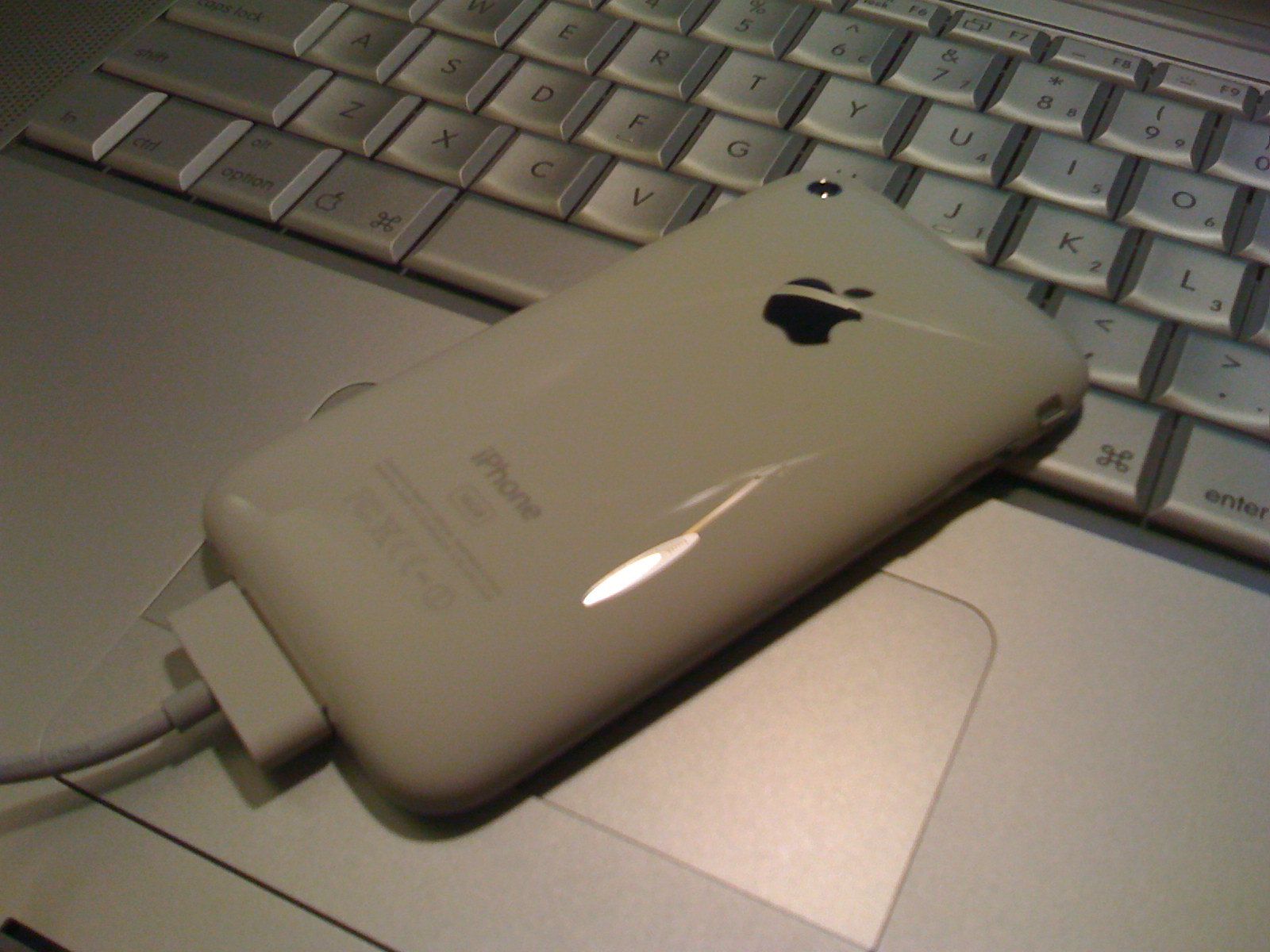
Google's open mobile OS platform, Android, quickly became a rival to Apple's closed iPhone platform over 2008. Google spent a lot of time encouraging developers to create applications for Android during the year. This led to many third-party apps and multiple App Stores. The first Android phone - the "T-Mobile G1 With Google" — was launched in September, followed by a Blackberry-like phone in December. Throughout all this, Android apps showed steady growth over 2008.
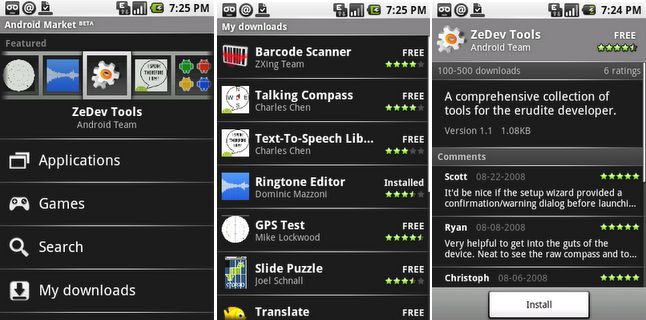
Despite the launch of both the App Store and the Android market, it wasn’t clear during 2008 that apps would be the right format for web services. That's because a radically new version of the web’s markup language had been released in January: HTML5. It was thought that HTML5 would, among other things, encourage multimedia services in browsers. We now know that apps won out over HTML5, but it was an open question at the time.
Browsers Are Revamped
The debate over websites vs. apps was further fueled by long-overdue innovation on the browser engine front. Firefox 3 was released in June, and in September Google launched a groundbreaking new browser called Chrome.
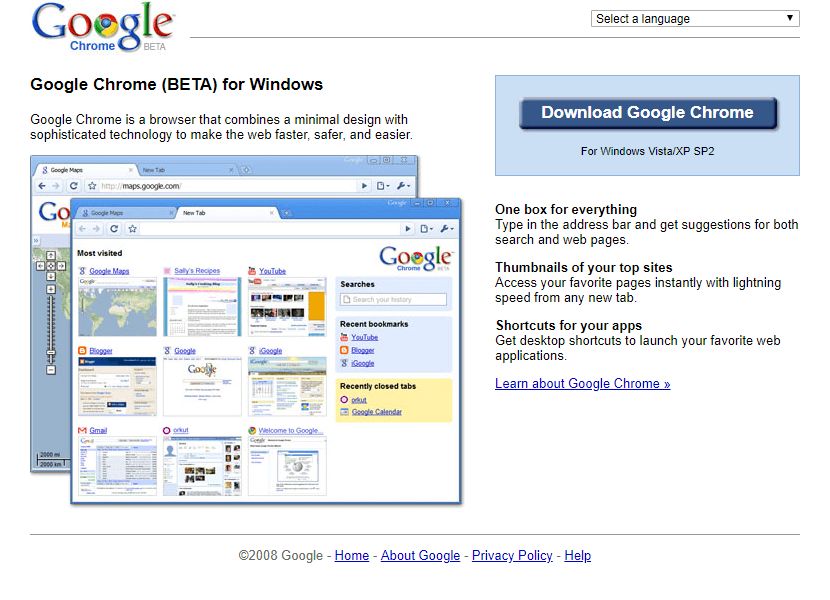
Google positioned Chrome as a new type of browser designed for web apps, not just web pages. "People are watching and uploading videos, chatting with each other, playing web-based games...all these things didn't exist when the first browsers were created," said Pam Greene from Google.
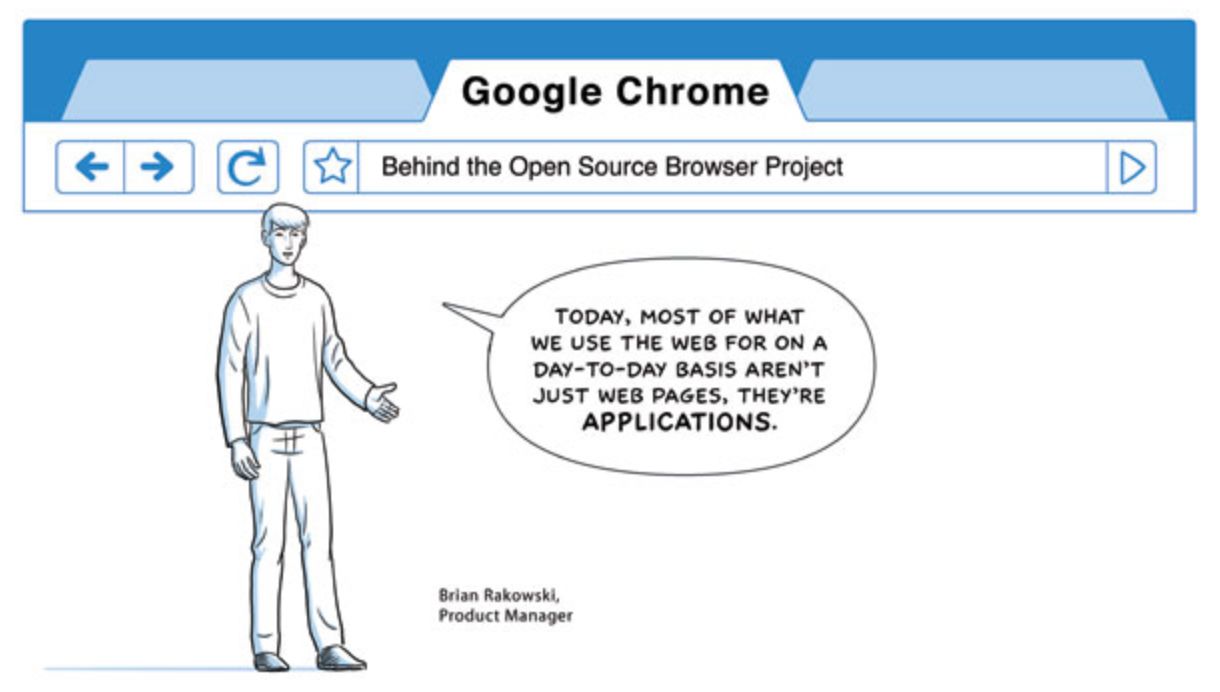
Mozilla had released Firefox 3 in June, which received generally favourable reviews. As RWW's Marshall Kirkpatrick wrote in November 2008, "Firefox is safe, standards compliant, extensible...and not made by Microsoft." At that time, the majority of RWW readers visited using Firefox (55%, compared to 27% for IE, 8% Safari and 5% for the still beta Chrome). Indeed, it wasn't until a few years later that Chrome overtook Firefox. If you were an indie web fan in 2008, chances are you were a Firefox user.
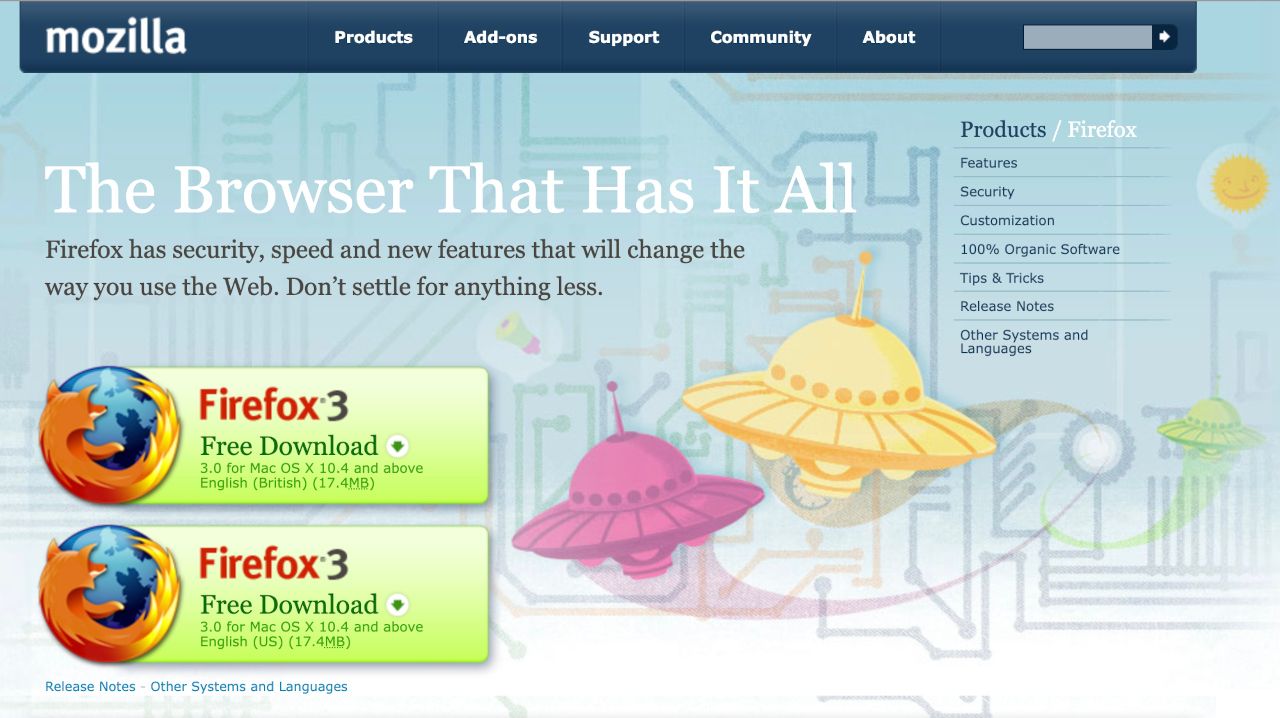
Streaming Goes Mainstream
Partly because of the increasing popularity of web and mobile apps, content was starting to morph into something new as well. In January, Netflix announced that its rental-disc subscribers were now entitled to unlimited streaming at no additional cost. A couple of months later, Hulu launched publicly. So video streaming was starting to become a part of the culture.
YouTube also continued to grow over 2008 — including in video quality, when 720p HD support was added in December.
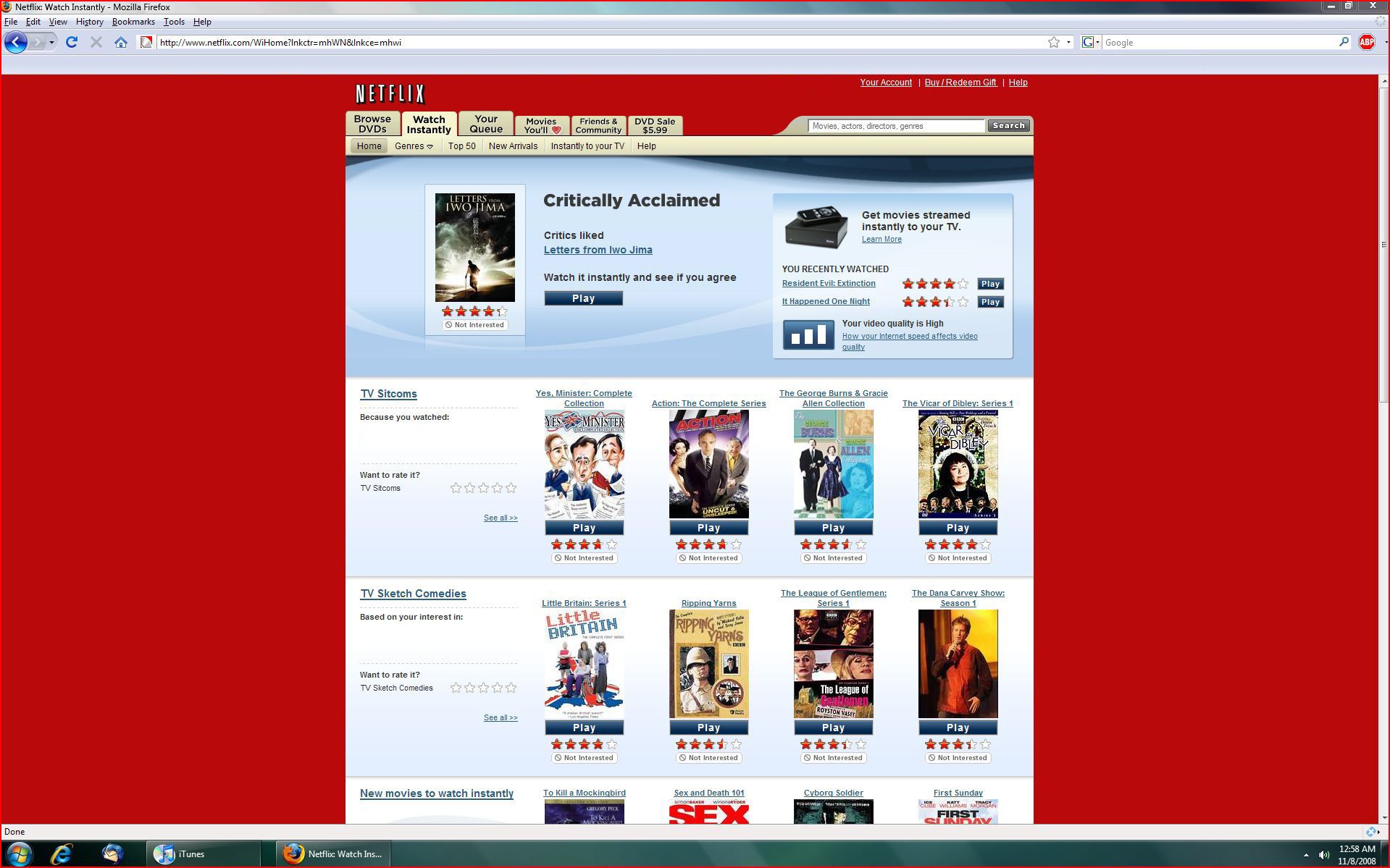
While the streaming revolution was slowly kicking into gear, Netflix decided to open up some of its data to social apps. In September, Netflix released an API allowing "access to data for over 100,000 movie and TV episode titles on DVD as well Netflix account access on a member's behalf."
Meanwhile Spotify launched in October 2008, bringing music streaming to the fore as well. While it wouldn't launch into the US until mid-2011, by the end of 2008 the product was up and running as an invite-only beta in Europe.
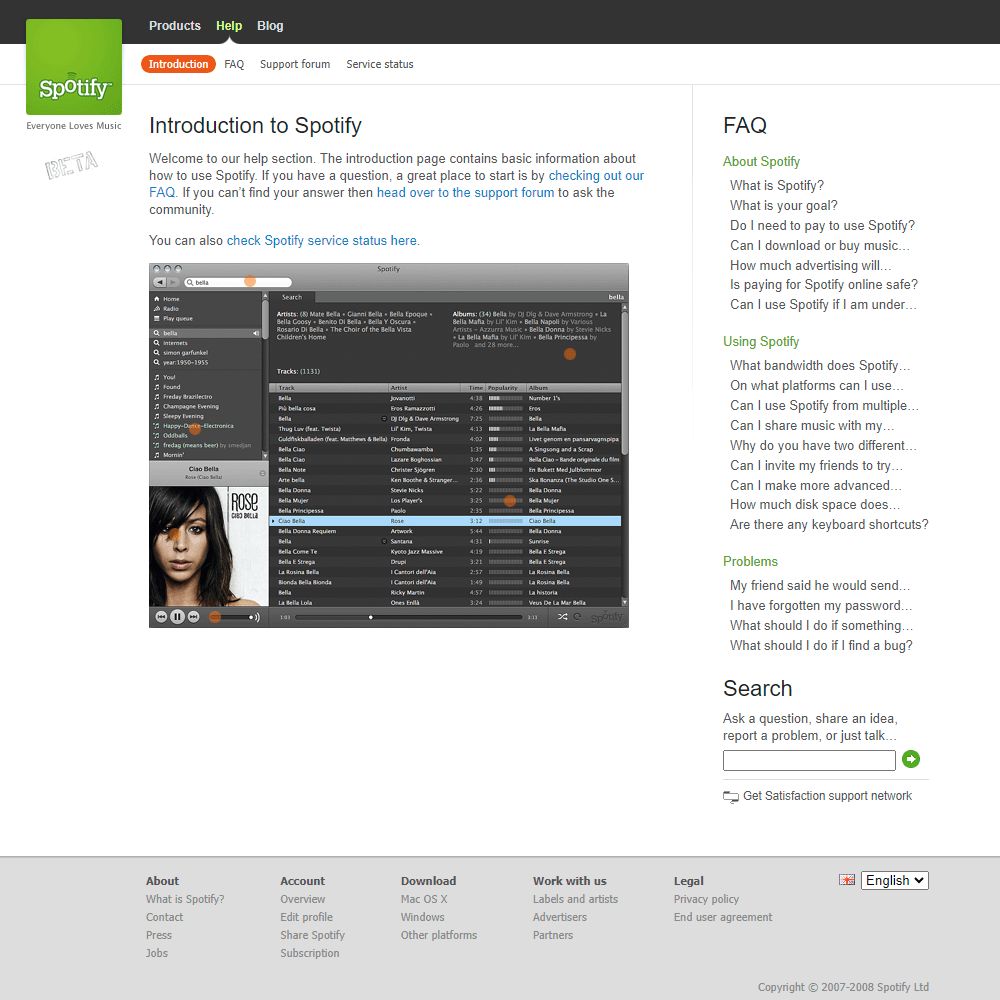
Social Logins
Logging into web apps using a centralized ID became a trend in 2008. In May, Google launched a new service called Friend Connect, aiming to "bring the social" to any page around the web. As described by Marshall Kirkpatrick in a May 2008 RWW post, "Friend Connect uses OpenID, oAuth and Open Social to let users log in to their favorite apps using a trusted ID provider and then access their friend info from those apps."

Facebook countered Google with the launch of Facebook Connect. As described by RWW's Sarah Perez, "sites can access your Facebook account details and friend graph and move that data back and forth between their site and Facebook."
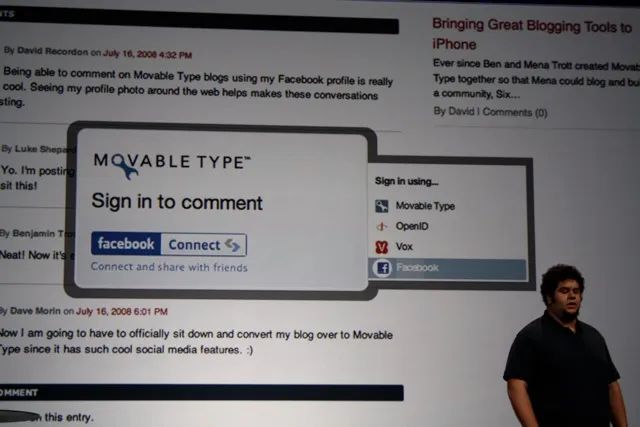
Perhaps the most ambitious project of this ilk was Google's OpenSocial, an attempt to establish an "open stack" for social software. It was essentially an open standard for social networking widgets (i.e. third-party apps), and it did gain a lot of traction over 2008. By November, OpenSocial had reached 675 million registered users and there were 7,500 applications using it — including MySpace, AOL, Bebo, hi5, LinkedIn, Ning, Orkut, Yahoo!.
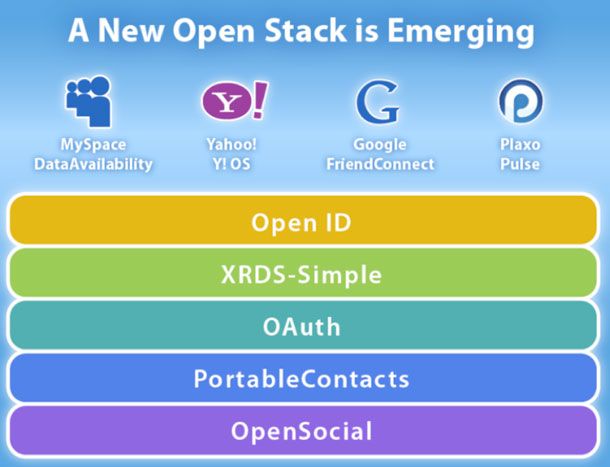
However, two notable holdouts from OpenSocial were Facebook and Microsoft. Facebook was not yet the behemoth it would become in the 2010s, but its growth rate over 2008 was still impressive. It reached 140 million active users by end of the year, growing at a rate of 600,000 users each day.
Of course, eventually Facebook won out. But by the end of 2008, many web geeks held out hope for an open social media ecosystem (I know, naive wasn't it!).
Read next: More year-by-year overviews of internet history
Buy the Book
My Web 2.0 memoir, Bubble Blog: From Outsider to Insider in Silicon Valley's Web 2.0 Revolution, is now available to purchase:
- Paperback, US$19.99: Amazon; Bookshop.org
- eBook, US$9.99: Amazon Kindle Store; Apple Books; Google Play
Or search for "Bubble Blog MacManus" on your local online bookstore.